Conus lividus and its related cone shells : help to identify them
Author : Touitou David, 2004
Shells wich will be treated is this article :
| Conus lividus | Hwass in Bruguière, 1792 | Conus frigidus | Lamarck, 1810 |
| Conus moreleti | Crosse, 1858 | Conus glans | Hwass in Bruguière, 1792 |
| Conus sugillatus | Sowerby, 1833 | Conus flavidus | Reeve, 1848 |
| Conus sanguinolentus | Quoy & Gaimard, 1834 |
This article is mainly dedicated to cone shells beginners and to amateur who never paid a real attention to those common shells. When you start diving to collect your own shells from the Indo-Pacific Ocean, you will often begin by finding common species, and in many cases, you'll probably pick up Conus lividus, Conus frigidus, Conus sanguinolentus, Conus flavidus and maybe Conus muriculatus/sugillatus, Conus moreleti, Conus glans.
Even cleaned, those species can be difficult to identify and while you snorkel, it can become a real nightmare ! Those species can have crusting algae and corals covering them and many times you can only see the aperture of the shell ! Those shells are most of the time scratched, because they usually do not burrow and lay often close to the reef where the wave action is rough.
With their periostracum, they roughly look like the same color in the water. Only shape and accurate eye can distinguish those different species in order to not take the same species over and over again…
 An incredible mess… but with time, all those will be correctly identified. |
|
This suggestion for identification is personal and not based on any book nor information. I base this article on my field experiences and if you have things to add to it, I shall surely add it to this page. Do not hesitate to send me an e- mail !
Here is a short description of habitats, rarity, and general things to know about these species. |
|
A. GENERAL INFORMATIONS AND INTRODUCING SPECIES
|
|

|
|
| From left to right : C. flavidus, C. frigidus, C. sugillatus, C. lividus, C. sanguinolentus & C. moreleti |
| A. GENERAL INFORMATIONS | |
| Conus lividus & Conus sanguinolentus | |
| It might be the most common on the list. It can be found almost anywhere. Those coming from the reef are often a little different from the ones found in the calm waters close to the shore. Those from the reef are often smaller and are corded/granulated whiles the others are bigger, have a smooth pattern and have less scratches. From this list, Conus lividus is the one which can reach the biggest size. |
| Conus lividus with smooth pattern |
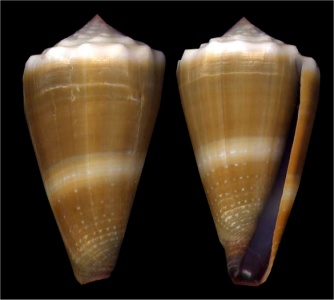
|
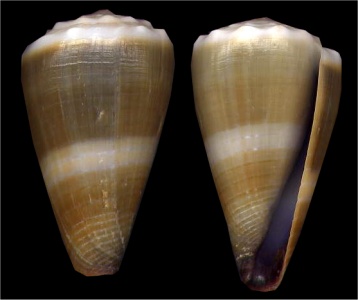
|
||
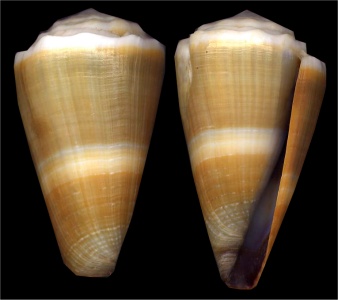
|
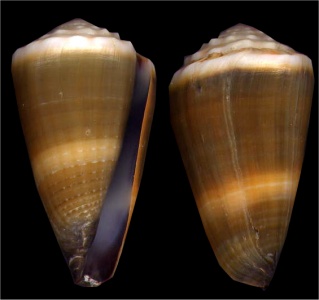
|
||
| Conus lividus with granulated pattern |
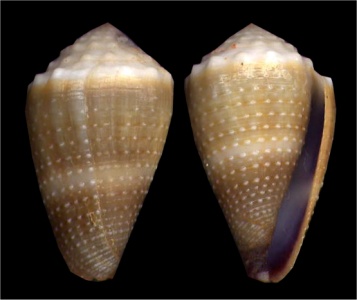
|
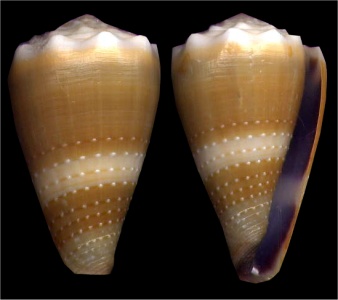
|
| Conus sanguinolentus looks very similar to Conus lividus when found together. Once cleaned, it is easy to separate them. This cone shell prefers the reef environment to the coast one. In some places (like Seychelles) it can be found in calm waters though. It is very common too. They are always corded/granulated, like the C. lividus from the reef and are found together… |
| Conus sanguinolentus |
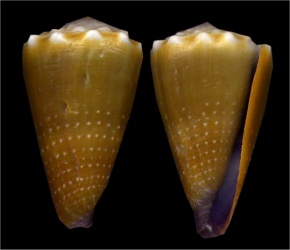
|
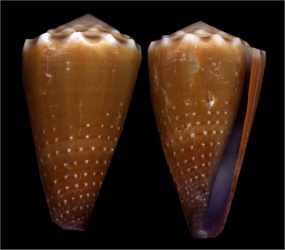
|
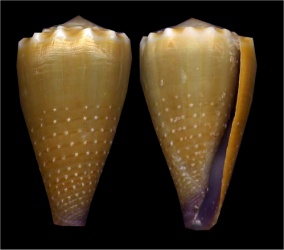
|
|
| Conus frigidus & Conus flavidus | |
|
Conus frigidus, a common shell, is also a reef specie. It can be linked with Conus flavidus and while hunting for shells, it is often difficult to separate them easily. Conus frigidus generally has a corded/granulated surface which is not the case of C. flavidus. If you can manage to see the surface (through the crusted algae and corals) though… In the Seychelles (Idian Ocean), Conus flavidus is very different from C. frigidus and can be easily distinguished. |
| Conus frigidus |
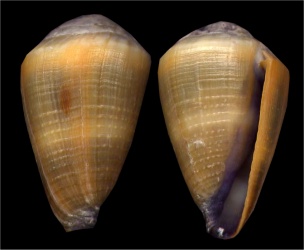
|
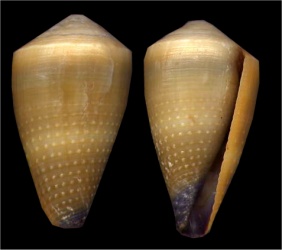
|
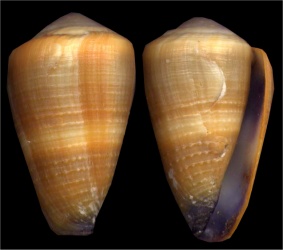
|
|
| Conus flavidus | |||
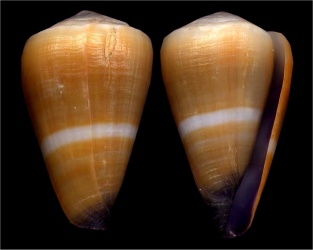
|
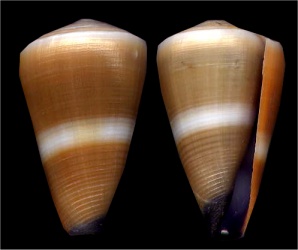
|
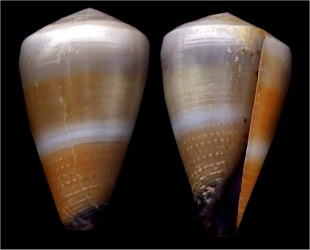
|
| Conus sugillatus | |
|
Those shells are sometime separated as different species and sometime Conus sugillatus is considered as a form of Conus muriculatus. It depends on the authors and collectors. In this article I shall not separate them.
However, these species are really different from the others but are often classified as Conus lividus. Conus muriculatus is much smaller than C. sugillatus, and is often corded/granulated & crowned while Conus sugillatus is smooth and reach much bigger sizes. Anyway both are very different from Conus lividus and its related species. Those can be considered as uncommon to rare species.
It seems from personal experience, in Tahiti, that Conus muriculatus is found next to the reef, inside the lagoon near the edge of channels drop off, in 6-10m of water, while Conus sugillatus is found very close to the shore, in muddy-sandy areas, in 1-2 meters of water. But C. muriculatus here seem sometimes to be a juvenile C. sugillatus… |

|
| Conus sugillatus | |||
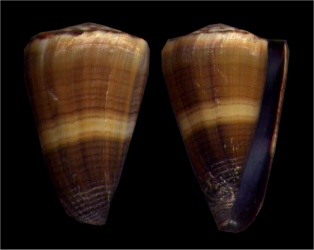
|
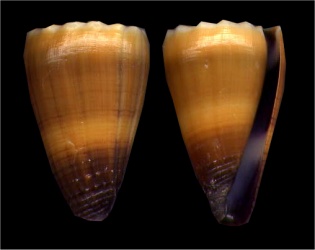
|
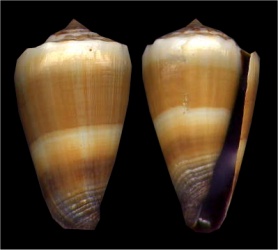
|
| Conus moreleti | |
|
This is my favourite with C. sugillatus. Conus moreleti, also an uncommon to rare specie. It is really close to Conus sanguinolentus, and only accurate eyes may makes the difference while snorkeling. It is most of the time covered with crusted algae just like Conus sanguinolentus and lives close to the reef. Even if it is more elongated and has different aperture color and a darker animal, it can be easily spotted as a common Conus sanguinolentus. Conus moreleti shall not be corded/granulated like C. sanguinolentus though.I usually find them together, so often I might pass over C. moreleti specimens sometimes… |
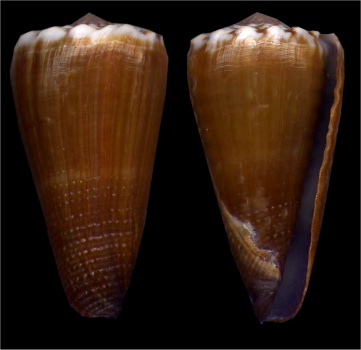
|
| Conus moreleti |
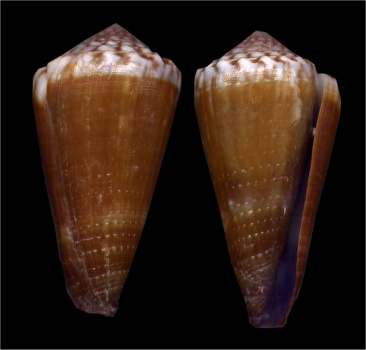
|
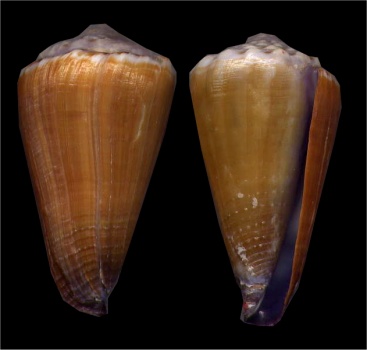
|
| Conus glans | ||
|
This rare specie can sometimes be named as a juvenile or small Conus frigidus. It has a polymorphic shell which can also be close to the rare Conus tenuistriatus. When it is close to C. frigidus, it is corded/granulated and has the same global color, but size and shape are different. It is a very small shell and it is more "ventricosely conical". And it is a small shell often around 15-25mm. |
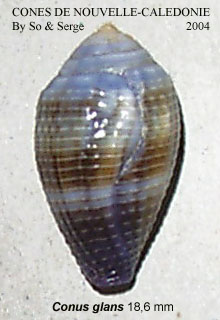
|
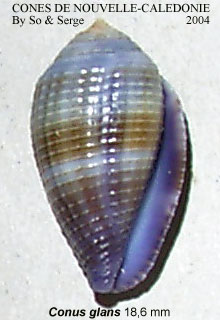
|
|
B. HELP IN IDENTIFYING CLEANED SHELLS First separate crowned spire shells than smooth spire ones :
– Crowned spire : C. lividus / C. sanguinolentus / C. moreleti / C. muriculatus Quick sum-up of spire differences between species :
a) Crowned spire species : Conus lividus (left) & Conus sanguinolentus (right) :
Conus moreleti (left) & Conus sanguinolentus (right) :
b) Not Crowned spire species : Conus frigidus (left) & Conus flavidus (right) :
c) Slightly Crowned spire species : Conus lividus (left & right) & Conus sugillatus (center) :
C. HELP IN IDENTIFYING THEM WHILE DIVING This is the most difficult part. First if you see many shells grouped, they might be common and should not be considered as Conus moreleti & Conus sugillatus. But you could find a locally good spot with those uncommon ones though.
If the shell is full of crusted alage, try to get rid of part of it by hitting the shell with someting like a knife. If the shell has a smooth spire, and is dark with no bandings it is C. sugillatus. If it has white spire and banding, without any granulations, then it is C. flavidus. And it is granulated, with a discret banding it may be C. frigidus. D. WORD OF THE END : THE EXCEPTIONS Of course nothing is never perfect and shells may vary so much, depending of their habitat, that you might encounter exceptions and hybrids. It is interesting to collect such shells for their unique looking. Especially with Conus flavidus. Here are some :
|






